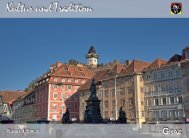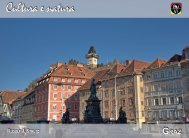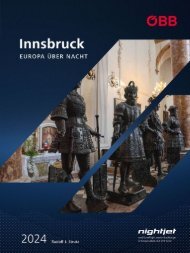Turkey Aegean Coast - Priene, Miletus and Didyma
Hundreds of travel guide and travel accounts are flooding the market. Printed or in electronic form, in part, very extensive and detailed. But what if you are planning a short vacation, or simply a round trip to and not nearly have the time to work through hundreds of facts and details? All who wish to enjoy the beauty of the region and the wonderful artwork this series of books is dedicated to. The first book deals with the Aegean Coast and here in particular with the places Priene, Miletus and Didyma.
Hundreds of travel guide and travel accounts are flooding the market. Printed or in electronic form, in part, very extensive and detailed. But what if you are planning a short vacation, or simply a round trip to and not nearly have the time to work through hundreds of facts and details? All who wish to enjoy the beauty of the region and the wonderful artwork this series of books is dedicated to. The first book deals with the Aegean Coast and here in particular with the places Priene, Miletus and Didyma.
Create successful ePaper yourself
Turn your PDF publications into a flip-book with our unique Google optimized e-Paper software.
1<br />
THE IDEA<br />
<strong>Priene</strong>, <strong>Miletus</strong> <strong>and</strong> <strong>Didyma</strong> are neighboring cities.<br />
Even in ancient times, the three regions were closely<br />
interrelated.<br />
What could be better than to visit the three fabled cities?<br />
On the following pages you will find moments <strong>and</strong><br />
impressions of this fantastic ancient area.
PREFACE<br />
Hundreds of travel guide <strong>and</strong> travel accounts are flooding the<br />
market. Printed or in electronic form, in part, very extensive <strong>and</strong><br />
detailed.<br />
But what if you are planning a short vacation, or simply a<br />
round trip to <strong>and</strong> not nearly have the time to work through hundreds<br />
of facts <strong>and</strong> details?<br />
All who wish to enjoy the beauty of the region <strong>and</strong> the wonderful<br />
artwork this series of books is dedicated to.<br />
The first book deals with the <strong>Aegean</strong> <strong>Coast</strong> <strong>and</strong> here in particular<br />
with the places <strong>Priene</strong>, <strong>Miletus</strong> <strong>and</strong> <strong>Didyma</strong>.<br />
2<br />
IDEE UND FOTOS<br />
RUDOLF J. STRUTZ
My books are illustrated companions indicating short <strong>and</strong> concise<br />
history, region <strong>and</strong> the visual impressions.<br />
One or the other tip in the region round the picture <strong>and</strong> help the<br />
reader to gain a quick overview.<br />
The book can be experienced the best, using an iPad, but there is<br />
also a version in Acrobat PDF file that has a few limitations. If you<br />
have accepted the book on the iBookstore, you will continuously receive<br />
information from Apple, when in the existing book changes occur.<br />
Enjoy reading <strong>and</strong> exploring the spectacular region of the Turkish <strong>Aegean</strong>,<br />
a journey that you can take at any time.<br />
I look forward to your comments, suggestions <strong>and</strong> comments. You<br />
can contact me either through my website: jr-design.net using my<br />
email address rsvienna@icloud.com. A few quick tips before you<br />
plunge into the matter:<br />
FOOTWEAR<br />
Remember that the places described in this book are already several<br />
thous<strong>and</strong> years old. The roads <strong>and</strong> sidewalks of yesteryear have become<br />
rougher. As "st<strong>and</strong>ard visitor" you do not need hiking boots,<br />
but your feet will be very grateful for your choice of a slightly more<br />
stable shoe.<br />
RAIN-COVER<br />
If you visit the region in the winter, meaning the more rain intense<br />
time, a rain protection - not necessarily an umbrella - will be of great<br />
advantage. If you have a camera, you should also remember to protect<br />
this electronic device from rain.<br />
DRINKS<br />
Don't forget to bring something to drink along (water might be best),<br />
the roads are sometimes very difficult <strong>and</strong> at a rest stop on a stone,<br />
you could treat yourself to a drink from the bottle brought.<br />
GARBAGE<br />
It is understood that no garbage should remind others of your visit.<br />
Even cigarette butts are trash!<br />
ANIMALS<br />
In <strong>Turkey</strong> there are anywhere where tourists are traveling many dogs<br />
<strong>and</strong> even more cats. Please remember whilst feeding these animals,<br />
they are not necessarily cuddly toys.<br />
NO CLIMBING<br />
If you visit a theater, you can of course<br />
go up into the highest ranks. Caution<br />
should be exercised, because the<br />
stones could partly be slippery <strong>and</strong> the<br />
spectator areas are relatively steep.<br />
That the stairs have suffered a bit under<br />
the test of time, you will also realize.<br />
In no case, however, you should<br />
climb on statues or houses that can easily<br />
go into the eye.<br />
RESTROOMS<br />
In most archaeological sites, near the entrance there is either a public<br />
restroom or a pub with a restroom. Don’t forget the small change!<br />
In the ancient places themselves are no toilets, so please think about<br />
it in any way.<br />
3
2<br />
THE REGION<br />
This historical map shows the wealth of mystical sites of<br />
antiquity.<br />
Travelers to this mysterious region are easily falling into<br />
dreams. Go with open eyes, <strong>and</strong> especially with an<br />
open mind on the trip <strong>and</strong> let you inspire by the impressions.
PRIENE - MILET - DIDYMA<br />
From Izmir, the third largest city of <strong>Turkey</strong>, these three historic sites<br />
are easily accessible in a day. The route from Izmir to the first station<br />
<strong>Priene</strong> is about 130 km long<br />
GOOGLE MAPS - INTERNET LINKS<br />
<strong>Priene</strong> - Milet - <strong>Didyma</strong><br />
Entire Route<br />
Asian Minor Map<br />
5
PRIENE<br />
Our journey begins in the ancient city of <strong>Priene</strong>, which lies in the<br />
mountainous environment of Mycale Mountains.<br />
INTERNET LINKS<br />
Izmir - <strong>Priene</strong><br />
<strong>Priene</strong><br />
6
MILET<br />
Along a mountain ridge, on which there is a national park, it goes beyond<br />
the me<strong>and</strong>ering alluvial l<strong>and</strong> to <strong>Miletus</strong>.<br />
GOOGLE MAPS - INTERNET LINKS<br />
<strong>Priene</strong> - Milet<br />
Milet<br />
7
DIDYMA<br />
A few kilometers away in <strong>Didyma</strong>, lies the very impressive Temple of<br />
Apollo, which is under the management of <strong>Miletus</strong>.<br />
GOOGLE MAPS - INTERNET LINKS<br />
Milet - <strong>Didyma</strong><br />
<strong>Didyma</strong><br />
These links will only work if your device is connected to the Internet. The links will open its own<br />
window outside of this book! Double-click on the start button of the iPad <strong>and</strong> you can return to<br />
the book.<br />
8
3<br />
PRIENE<br />
<strong>Priene</strong> is located in the north of <strong>Miletus</strong> on the mountainous<br />
peninsula of Mycale. The steep mountain is up<br />
to 1,265m high.<br />
The rugged rising Mykale mountains poses because of<br />
its steep slopes <strong>and</strong> difficult passages are still holding<br />
some secrets from ancient times.
FIRST IMPRESSIONS<br />
It is not known exactly where the first settlement of <strong>Priene</strong> lies. It<br />
is clear that <strong>Priene</strong> was part of the Ionian cities <strong>and</strong> fulfilled the<br />
role as protector of the federal sanctuary Panionion.<br />
The Panionion lies north of <strong>Priene</strong> in Mykale Mountains on a sea<br />
level of about 750 meters. Discovered was that famous <strong>and</strong> often<br />
mentioned sanctuary in 2004 by German archaeologists.<br />
11
THE 7 SAGES OF GREECE<br />
•Thales of Milet<br />
•Pittakos of Mytilene<br />
•Bias of <strong>Priene</strong><br />
•Solon of Athen<br />
•Kleobulos of Lindos<br />
•Myson of Chenai (or Chen)<br />
•Chilon of Sparta<br />
According to Platon's Protagoras (343a).<br />
Bias of <strong>Priene</strong> lived about 590-530 BC <strong>and</strong> at<br />
that time, he was a leading figure in <strong>Priene</strong>. He<br />
enjoyed a high reputation <strong>and</strong> was very eloquent<br />
<strong>and</strong> persuasive.<br />
As Thales of <strong>Miletus</strong> belonged to Bias of <strong>Priene</strong><br />
fixed canon of the Seven Sages of Greece.<br />
One of his key phrases was "the best democracy<br />
is one in which all fear the law as a tyrant."<br />
There are many legends about bias: for example<br />
he chased two fatted mules through the<br />
camp of the Lydians, who besieged the city, so<br />
they drew the conclusion that <strong>Priene</strong> had great<br />
reserves of food. He also stacked piles of s<strong>and</strong><br />
that he covered with grain. The enemy scouts<br />
assumed that these are enormous food supplies.<br />
A peace treaty with King Alyattes, who besieged<br />
the city, was the result.<br />
12
THE ATHENA TEMPLE<br />
One of the few buildings of antiquity from which the name of the<br />
architect has been recorded: Pytheos (also Pythis) lived about<br />
390 BC <strong>and</strong> was a Greek sculptor <strong>and</strong> architect. Among other<br />
things, he built next to the temple of Athena also the Mausoleion<br />
of Halikamass <strong>and</strong> influenced the entire Ionic temple architecture.<br />
The model created by Pytheos considered especially the organization<br />
<strong>and</strong> the proportion of the structures was hence on used as<br />
a blue print for future buildings.<br />
13
<strong>Priene</strong> can look back on a very exciting,<br />
warlike <strong>and</strong> cunning history. It was also<br />
part of the Ionian Cities <strong>and</strong> Towns. The<br />
city-state covered an area of about 400<br />
square kilometers, the actual urban area<br />
accounted for about 37 hectares, of which<br />
only 15 hectares were cultivated. The remaining<br />
area offered in the case of sieges<br />
surrounding population refuge.<br />
A city wall with three gates protected the<br />
city.<br />
On the 300 m high hill behind the Athena<br />
Temple there was the Acropolis.<br />
As <strong>Priene</strong> was newly established in the 3rd<br />
Century BC, despite the steep hillside they<br />
realized a rectangular street pattern. This<br />
form of urban development has been described<br />
as hippodamian.<br />
<strong>Priene</strong> is a good example of how a midsized<br />
urban regular Polis looked. The citystate<br />
had about 5,000 inhabitants, it was<br />
never of particular political or historical importance,<br />
but there is lots of evidence of<br />
brisk trade operations.<br />
14
THE AGORA<br />
The Agora of <strong>Priene</strong> was an open meeting area for all residents of<br />
the city. Here, festivals <strong>and</strong> events were held; it was the social<br />
center of the city.<br />
In addition to the Agora was the Bouleuterion, which is similar to<br />
our present parliament. The Greek writer, historian <strong>and</strong> geographer<br />
Pausanias (about 115 to 180 AD.) Called the Agora of <strong>Priene</strong><br />
"as a typical example of an ionic Agora". Built in the 3rd Century<br />
BC. It was created in a horseshoe shape.<br />
15
CITY CENTRE<br />
The Agora was the administrative<br />
<strong>and</strong> social meeting point <strong>and</strong> the<br />
centre of the the Polis.<br />
Places like the Agora could be<br />
found in every hellenistic City.<br />
East <strong>and</strong> west of the Agora was supported by<br />
18 columns <strong>and</strong> in the south 30 columns were<br />
the conclusion.<br />
Around the Agora, there were administrative<br />
buildings, the Bouleuterion - this was the meeting<br />
place of the Bule, the Council of the City -<br />
<strong>and</strong> next to the Prytaneion, (we would call today<br />
a seat of government).<br />
In Prytaneion the holy fire of Hestia, goddess of<br />
the hearth, burned.<br />
The central altar was 6.2 m long <strong>and</strong> 5.15 m<br />
high, <strong>and</strong> dedicated to the god Hermes. The<br />
"small Agora" on the left side was the marketplace,<br />
as evidenced by excavations that<br />
brought to light many objects, which can be<br />
close to the products offered.<br />
16
THE THEATER<br />
The Theater of <strong>Priene</strong> has excellent acoustics <strong>and</strong> because of the<br />
capacity of 6,500 visitors, all inhabitants of <strong>Priene</strong> could go to<br />
there at the same time.<br />
The seats of the spectators were built directly into the hillside. It<br />
formed three sections. As protection for the scorching summer<br />
sun postholes in the stones are embedded.<br />
In the middle of the fifth row was the "Royal Box", which, however,<br />
was not part of the original construction.<br />
17
F<br />
H<br />
C<br />
G<br />
E<br />
I<br />
J<br />
D<br />
A<br />
K<br />
B<br />
IONIC THEATER<br />
The typical Ionic Theater was a<br />
horseshoe-shaped open-air theater,<br />
which mostly used the natural<br />
environment e.g. a slope.<br />
The stage was formed initially<br />
with a wooden stage area,<br />
where the actors acted. Scenes<br />
<strong>and</strong> backdrops were located between<br />
the columns of Prokerions.<br />
A - Thymle (altar-shaped elevation on which the<br />
choir leaders conducted)<br />
B - Prohedrie (seats of dignitaries)<br />
C - Diazomata (wide steps, the seats are divided<br />
into ranks)<br />
D - Klimakes (steps <strong>and</strong> stairs)<br />
E - Paradoi (lateral Visitor Arrivals)<br />
F - Analemmata (outside walls of the Tribune)<br />
G - Kerkides (wedge-shaped box)<br />
H - Scene (stage area)<br />
I - Proskerion (front stage)<br />
J - Pinakes (space within the pillars of<br />
Proskerion)<br />
K - Orchestra (circular of the stage, playing<br />
area for Orchestra <strong>and</strong> Cast)<br />
18
4<br />
MILETUS<br />
<strong>Miletus</strong> (Turkish: Milet) suffered the same fate as many<br />
other cities of the <strong>Aegean</strong>. Because of 4 ports <strong>Miletus</strong>,<br />
once an economically important city, but because of<br />
the ongoing siltation over the centuries by the river me<strong>and</strong>ers<br />
(Turkish: Büyük Menderes) Milet is far inl<strong>and</strong> today.
FIRST IMPRESSIONS<br />
Arriving at <strong>Miletus</strong> one is immediately struck by the huge plant<br />
with the open theater. You can see how the theater served over<br />
time as a fortress, which simply, like a penthouse was built on top<br />
of the existing building.<br />
20
NEW YORK ANTIQUTITY<br />
Creating modern cities, as for e-<br />
xample New York, has its roots in<br />
the historical walls of <strong>Miletus</strong><br />
Also in geometry, one is constantly<br />
reminded of <strong>Miletus</strong>.<br />
Today we think about after recycling of building<br />
materials, already thous<strong>and</strong>s of years ago, this<br />
was common.<br />
But not only was recycling long before our era,<br />
in the <strong>Aegean</strong> already common, especially in <strong>Miletus</strong><br />
impressive developments took place, they<br />
are valid up to the present time, valid <strong>and</strong> in<br />
use:<br />
Hippodamus of <strong>Miletus</strong> lived in the 5th Century<br />
BC <strong>and</strong> was the founder of "Hippodamian system".<br />
Isidore of <strong>Miletus</strong> was one of the co-architects<br />
of the Hagia Sophia.<br />
Thales of Millet, a merchant, who acquired<br />
great knowledge in geometry. He was one of the<br />
Seven Sages of Greece<br />
21
THE THEATER<br />
Looking through the entrance arch of the theater of <strong>Miletus</strong>. In<br />
the background, the reborn caravanserai, which invites you to<br />
stop by today.<br />
22
The impressive theater of <strong>Miletus</strong> shows<br />
which important value art (<strong>and</strong> communication)<br />
had in the ancient world.<br />
Particularly noteworthy are the many wellpreserved<br />
reliefs.<br />
The theater had a capacity of about 25,000<br />
visitors. The Roman Emperor Trajan built<br />
the theater in the year 100.<br />
The Byzantine added a special feature in<br />
7th <strong>and</strong> 8 Century; they built a fort over the<br />
theater.<br />
From that time, the theater was used mostly<br />
as a fortified shelter for the inhabitants of<br />
<strong>Miletus</strong>.<br />
THE ACTS OF THE APOSTLES<br />
The Book of Acts (# 20) tells us that the<br />
Apostle Paul has held a farewell speech at<br />
<strong>Miletus</strong>.<br />
He attended <strong>Miletus</strong> on his last journey to<br />
Jerusalem. The story goes on to say that he<br />
sent for the Ephesian elders about to announce<br />
to them his martyrdom.<br />
23
THE INNER CITY<br />
Because of the high water table <strong>and</strong> during heavy rains, the center<br />
of the city of <strong>Miletus</strong> is unfortunately not passable.<br />
But from the hill behind the theater, you can see the impressive<br />
silhouette of the former economic hub.<br />
24
Although a large part of <strong>Miletus</strong> is in the<br />
winter months under water, <strong>Miletus</strong> is definitely<br />
worth a visit.<br />
The area around the city center is used<br />
mostly for agriculture <strong>and</strong> there are also no<br />
excavations.<br />
IONIAN LEAGUE<br />
According to Herodotus, the Ionian League<br />
was found in the 7th Century BC, it included<br />
12 cities <strong>and</strong> isl<strong>and</strong>s:<br />
•Phocaea<br />
•Clazomenae<br />
•Erythrai<br />
•Teos<br />
•Lebedos<br />
•Colophon<br />
•Ephesus<br />
•<strong>Priene</strong><br />
•<strong>Miletus</strong><br />
•Myus<br />
•Chios<br />
•Samos<br />
Allegedly there was also a 13th City, Melita<br />
in the covenant, but because of the arrogance<br />
of its citizens, Melita was<br />
again ruled out <strong>and</strong> replaced with Smyrna.<br />
25
FAUSTINA BATH<br />
The Faustina baths are among the most important buildings of Millet.<br />
The baths were of the Roman Empire through to the Byzantine<br />
era in use.<br />
26
The Faustian Thermal Bath located in the<br />
center of the ancient city complex, between<br />
the stadium <strong>and</strong> the south market.<br />
There were no hot springs, the bath had to<br />
be heated by fire all year round.<br />
The particular degree of preservation of the<br />
buildings show impressively how people<br />
eased up in the ancient world.<br />
The high number of sculptures shows how<br />
the public spaces were designed <strong>and</strong> embellished.<br />
As with many ancient excavations the originals<br />
usually are not to be seen, where they<br />
actually were found. They are in many museums<br />
around the world. Particularly many<br />
found objects of <strong>Miletus</strong> found are in Berlin<br />
now.<br />
ONE TIP<br />
Right next to the caravanserai<br />
freshly squeezed<br />
pomegranate juice<br />
is sold.<br />
In Greek mythology,<br />
the pomegranate has been attributed to the<br />
gods of the underworld, Hades <strong>and</strong> Persephone.<br />
So do not drink too much, otherwise<br />
the gods might take revenge.<br />
27
5<br />
DIDYMA<br />
The ancient sanctuary <strong>Didyma</strong> houses an important<br />
oracle of Apollo. The Hellenistic Temple of Apollo in<br />
size only surpassed in Greece by the temple of Hera in<br />
the Heraion of Samos <strong>and</strong> the Temple of Artemis at<br />
Ephesus. The Temple of Apollo is one of the best preserved<br />
of the ancient sanctuaries.
FIRST IMPRESSIONS<br />
Overwhelmed by the huge proportions of the Apollo Temple, one<br />
of the most important Hellenistic sanctuaries, one enters the excavation<br />
site of <strong>Didyma</strong>.<br />
Visitors are only aware of the true dimensions of the huge pillars,<br />
when they st<strong>and</strong> in front of one of the monuments.<br />
The cities of <strong>Didyma</strong> <strong>and</strong> <strong>Miletus</strong> were connected with the "Sacred<br />
Way". This paved <strong>and</strong> with statues decorated procession<br />
route was 16.2 km long. Unfortunately, today only a few remnants<br />
of this magnificent street are visible.<br />
29
The Apollo temple of <strong>Didyma</strong> is built in the<br />
Ionic style. The columns - there were 122<br />
pieces - were both 19.7 m high <strong>and</strong> have a<br />
diameter of 1.96 m.<br />
Although 600 years was built on the temple,<br />
it was never finished.<br />
On the walls there are still carved in marble<br />
slips, suggesting that for a column 40,000<br />
drachmas were paid wages, which is about<br />
USD 200,000. At 122 columns you can<br />
guess how important this building must<br />
have been.<br />
... AND WHO WAS APOLLO?<br />
Apollo was the son of Zeus <strong>and</strong> Leto. He<br />
was a twin brother of Artemis <strong>and</strong> is one<br />
of the supreme gods of antiquity.<br />
He was the main god of prophetic predictions,<br />
the arts, music <strong>and</strong> the patron saint<br />
of medicine.<br />
30
RELIEFS - MEDUSA’S HEAD<br />
<strong>Didyma</strong> was with Delphi, Dodona <strong>and</strong> Claros of the most important<br />
Greek oracles.<br />
Located at the end of over 12 km long Sacred Way, <strong>Didyma</strong> was<br />
an extremely refined <strong>and</strong> elegant place, the center was the enormous<br />
Temple of Apollo.<br />
31
The numerous reliefs <strong>and</strong> statues testify the<br />
importance of this holy place.<br />
The sculptures were the completion of the<br />
122 Ionic columns. Above the architrave an<br />
elaborate frieze of foliage, figures of lions<br />
<strong>and</strong> medusa heads was created.<br />
Because the construction of the Hellenistic<br />
homage plant began about 330 BC, it is often<br />
associated with the visit of Alex<strong>and</strong>er<br />
the Great at <strong>Miletus</strong> in 334 BC.<br />
The Milesian builders <strong>and</strong> architects Daphnis<br />
of <strong>Miletus</strong> <strong>and</strong> Painios of Ephesus performed<br />
the design of the temple.<br />
The Temple was under construction until<br />
200 AD, but it was never completed.<br />
32
THE ORACLE<br />
Visitors enter the temple over 14 steps. The temple base, called<br />
the Pronaos, impressed by 12 columns <strong>and</strong> ornate walls.<br />
The Temple of Apollo was in his time a very sophisticated <strong>and</strong> elegant<br />
place. The oracle had a very important role in the ancient<br />
world <strong>and</strong> a lot of very important decisions based on the sayings<br />
that came from the oracle priests.<br />
The oracle could only be entered through two tunnel corridors.<br />
33
THE NAME DIDYMA<br />
The origin of the name <strong>Didyma</strong> is<br />
disputed; either it comes from the<br />
Kara or the Greek (didymos<br />
means "twin", it could be meant<br />
Apollo <strong>and</strong> Artemis).<br />
On the back there are three doors. The door in<br />
the middle is about 6.5 m wide <strong>and</strong> 14 m high.<br />
Here was the oracle.<br />
Only the chosen ones the, like the priests love<br />
to call themselves, understood <strong>and</strong> interpreted<br />
the encrypted sounds of the oracle.<br />
The priests used to apply similar techniques as<br />
in tricks of our times, in which magicians "are<br />
guessing" information about visitors. Unlike today,<br />
where this art is for enjoyment, at that time<br />
especially before any important decisions the<br />
oracle was asked, <strong>and</strong> therefore had an overwhelming<br />
influence on the events of Asia Minor.<br />
The exact sequence of oracle ceremonies has<br />
unfortunately not been documented; the priests<br />
created the verses of the oracles themselves.<br />
The Oracle was still very popular in the 1st <strong>and</strong><br />
second Century.<br />
34
TODAYS DIDYMA<br />
Over the ruins of antiquity are ruins of the now. Many residents<br />
started to settle down right on the excavation site, these settlements<br />
were dissolved now <strong>and</strong> again forfeited thus also slow.<br />
35
To reach Apollo's Temple you can either<br />
use a beautiful promenade, which is lined<br />
with a several shops. Alternatively there is<br />
street a few meters on the right, <strong>and</strong> walk<br />
past the 'new' ruins.<br />
<strong>Didyma</strong> is always worth a visit.<br />
You simply have to take the time <strong>and</strong> especially<br />
around the temple go to e.g. see on<br />
the back of the fallen columns <strong>and</strong> thus to<br />
obtain an insight how these blocks were assembled.<br />
To search the area with open eyes is also<br />
pays off, because you can see the fine detail<br />
of the sculptures <strong>and</strong> marbles statements<br />
closely.<br />
36
6<br />
MEANDER<br />
The two rivers - the Large <strong>and</strong> Small Me<strong>and</strong>er - Turkish<br />
they are called the Menderes rivers, flow through western<br />
<strong>Turkey</strong>.<br />
They st<strong>and</strong> responsible for many of the ancient ports<br />
today are far inl<strong>and</strong> <strong>and</strong> the isl<strong>and</strong>s come steadily<br />
closer to the mainl<strong>and</strong>.
THE CURVES OF THE MEANDERS<br />
Large me<strong>and</strong>er (Büyük Menderes) 550 km length<br />
Small Me<strong>and</strong>er (Küçük Menderes) 200 km length<br />
GOOGLE MAPS - INTERNET LINKS<br />
The Rivers<br />
Wikimedia Map<br />
38
The Great Me<strong>and</strong>er rises in the mountains<br />
of Phrygia <strong>and</strong> flows near the ancient city<br />
of <strong>Miletus</strong> in the <strong>Aegean</strong> Sea.<br />
The Little Me<strong>and</strong>er flows parallel to the<br />
lower reaches of the Great Me<strong>and</strong>er, about<br />
30 km north. The river rises about 2,000 m<br />
east of the Boz Dağı <strong>and</strong> flows in the city of<br />
Ephesus in the <strong>Aegean</strong> Sea.<br />
The two rivers provide the high percentage<br />
of suspended solids that the mouths are increasingly<br />
silted.<br />
The winding course of the me<strong>and</strong>er has become<br />
proverbial, <strong>and</strong> rivers, which have a<br />
similar course called "me<strong>and</strong>ering".<br />
The map shows how the sea has silted up<br />
over the centuries more <strong>and</strong> once thriving<br />
port cities are now found far inl<strong>and</strong>.<br />
39
7<br />
PLANET AEGEAN<br />
Here you will find a collection of photographs from the<br />
region <strong>Priene</strong>, <strong>Miletus</strong> <strong>and</strong> <strong>Didyma</strong>.<br />
More information about our cultural heritage in the <strong>Aegean</strong><br />
Sea you'll find on the Internet - or simply make<br />
the tour of the impressions themselves <strong>and</strong> experience<br />
on site.
PRIENE<br />
The area in which <strong>Priene</strong> lies is very<br />
hilly <strong>and</strong> the city-state was still<br />
applied geometrically precise<br />
41
MILETUS<br />
The environment of <strong>Miletus</strong> is used<br />
for agriculture. In the wet season<br />
<strong>and</strong> after heavy rain, the center of<br />
<strong>Miletus</strong> is usually flooded.<br />
42
FINE STONES<br />
In the courtyard of the temple of<br />
Apollo, in the oracle, one can make<br />
the conclusion of stones <strong>and</strong> beading<br />
a picture.<br />
The high-quality work to show how<br />
important the people in ancient<br />
times this place was.<br />
43
8<br />
CONCLUSION<br />
Quite contrary to the arduous journeys of antiquity it is<br />
now very comfortable <strong>and</strong> safe to travel on the very<br />
good Turkish road-network, using modern buses.<br />
When traveling to ancient sites, it is very useful if you<br />
have an underst<strong>and</strong>ing <strong>and</strong> knowledgeable guide<br />
(which talks a language you underst<strong>and</strong>)
PLANNING NEVER FAILS<br />
Unlike pure bath vacations, is a journey into the <strong>Aegean</strong> Sea, with<br />
the purpose to visit the ancient sites, something very special.<br />
If you plan your journey ahead, you have more fun <strong>and</strong> will better<br />
underst<strong>and</strong> the places <strong>and</strong> just get a deeper insight into the history<br />
of the <strong>Aegean</strong>.<br />
45
COPYRIGHT<br />
© 2013 Copyright JR-Design & Rudolf J. Strutz<br />
All material in this book may be not being reproduced<br />
without prior written permission from the<br />
author<br />
.<br />
46
RESOURCES<br />
Photographs <strong>and</strong> texts<br />
Rudolf Strutz - jr-design.net<br />
<strong>Miletus</strong> Bay Evolutions, Siliting Map<br />
Wikimedia Commons<br />
Map of Asia Minor<br />
Wikimedia Commons<br />
Maps <strong>and</strong> Satellite Images<br />
Google Maps & Google Earth<br />
INTERNET LINKS<br />
If you want to use the links in this book, your device must be connected to the Internet. The links are used primarily to that you do not have to<br />
search each location on the map, but just get a button there.<br />
MORE BOOKS BY RUDOLF J. STRUTZ<br />
Streetlife Vienna #1<br />
Reflections<br />
All books free of Charge on the iBookstore, btw.<br />
there is also a german version of this book available<br />
in the iBookstore.<br />
47

















